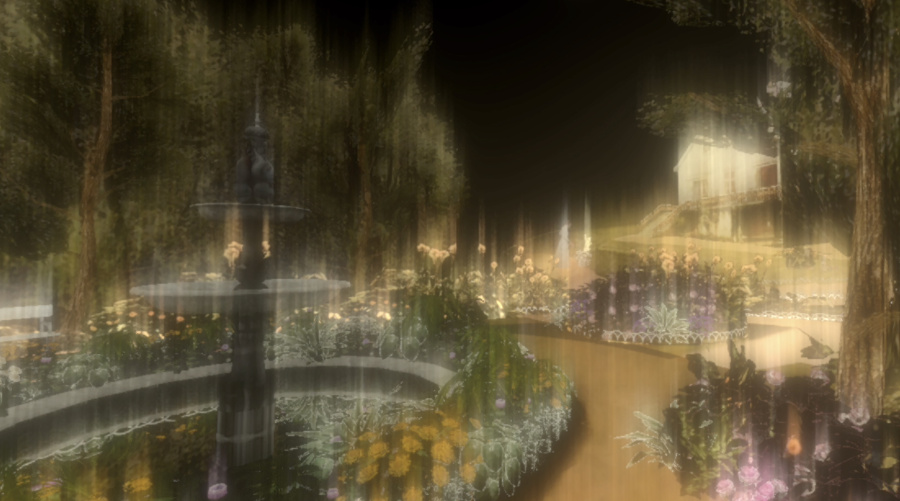Iluminace 2025, 37(2):75-94 | DOI: 10.58193/ilu.1813
Subjective Access and Focalization in VR
- University of Amsterdam, The Netherlands ✉

This paper examines the challenges of conveying a character’s inner world in virtual reality (VR) experiences, using the production of Finding Frida as a case study. It explores how a “constructive dialogue” with film theory, specifically narratology and cognitive approaches, can inform VR storytelling practices. The discussion originates from a practical problem encountered during the making of Finding Frida: how to lip-sync the virtual character. What began as a technical issue led to deeper dramaturgical questions about perspective, subjective access, and the role of the spectator in VR. Drawing on the work of Murray Smith, Peter Verstraten, and Michel Chion, the paper investigates how techniques like focalization, voice-over narration, and sound design can be utilized in VR to strengthen dramaturgy. It analyzes the concept of the “acousmêtre” — a sound heard without its source being seen — and its potential for generating suspense and facilitating emotional engagement. The paper argues that, unlike traditional film, where subjective access is often achieved through editing techniques like shot-reverse shot, VR creators must rely on alternative methods. It proposes that sound, with its spatial and immersive qualities, can be a powerful tool for guiding the spectator’s perspective and providing access to the character’s inner world.
Klíčová slova: VR creative documentary, focalization, sound design, diegetic/non-diegetic sound, environmental Storytelling, voice-over narration, practice-based research
Vloženo: 3. březen 2025; Revidováno: 11. září 2025; Přijato: 2. říjen 2025; Zveřejněno: 10. listopad 2025 Zobrazit citaci
Reference
- Burman, Nicolas. "Where Is Myself? A Reflection on the Spatiality and Disquieting Effects of Daniël Ernst's Virtual Reality Dioramas," soapbox, accessed September 20, 2025, https://www.soapboxjournal.net/onlinearticles/where-is-myself.
- Chion, Michel. The Voice in Cinema, trans. by Claudia Gorbman (New York: Columbia University Press, 1999).
- Dooley, Kath. "Conceptualizing and Developing Narrative-Based Virtual Reality Experiences: A Review of Disciplinary Frameworks and Approaches to Research," Journal of Screenwriting 14, no. 3 (2023), 229-249.
 Přejít k původnímu zdroji...
Přejít k původnímu zdroji... - Dooley, Kath, and Alex Munt. Screenwriting for Virtual Reality: Story, Space and Experience (Cham: Springer International Publishing AG, 2024).
 Přejít k původnímu zdroji...
Přejít k původnímu zdroji... - Gaynor, Steve. "AAA Level Design in a Day Bootcamp: Techniques for In-Level Storytelling," GDCVault, accessed September 21, 2025, https://gdcvault.com/play/1017639/AAA-Level-Design- in-a.
- Gulino, Paul Joseph. The Sequence Approach (New York: Bloomsbury Publishing Plc, 2004).
- Haga, Ole Kristoffer. "Shifting Diegetic Boundaries," in Screenwriting for Virtual Reality: Story, Space and Experience, eds. Kath Dooley and Alex Munt (Cham: Springer Nature Switzerland AG, 2024), 29-49.
 Přejít k původnímu zdroji...
Přejít k původnímu zdroji... - Halliwell, Stephen. "Diegesis-Mimesis," in Handbook of Narratology, eds. Peter Hühn, Jan Christoph
- Meister, John Pier, and Wolf Schmid (Berlin and Boston: Walter de Gruyter GmbH, 2014), 129-137.
- Jenkins, Henry. "Game Design as Narrative Architecture," Computer 44, no. 3 (2004), 118-130.
- Lefebvre, Henri. The Production of Space, trans. Donald Nicholson-Smith (Oxford: Blackwell, 1991).
- Levy, Cecilie. "Light from Aside: A Screenwriter's Perspective in Virtual Reality" (PhD diss., Inland Norway University, 2023).
- Mansilla, Wendy Ann. "Interactive Dramaturgy by Generating Acousmêtre in a Virtual Environment" (Paper presented at the International Conference on Entertainment Computing, Cambridge, September 20-22, 2006).
 Přejít k původnímu zdroji...
Přejít k původnímu zdroji... - Oppenheim, David, and Randall Okita. "The Book of Distance: Personal Storytelling in VR," in ACM SIGGRAPH 2020 Immersive Pavilion (SIGGRAPH '20) (New York: Association for Computing Machinery, 2020), article 5, 1-2.
 Přejít k původnímu zdroji...
Přejít k původnímu zdroji... - Rogstad, Anna. Kjente menn og kvinner (Oslo: Dybwad, 1926).
- Ryan, Marie-Laure. "Beyond Myth and Metaphor: Narrative in Digital Media," Poetics Today 23, no. 4 (2002).
 Přejít k původnímu zdroji...
Přejít k původnímu zdroji... - Smith, Murray. "Altered States: Character and Emotional Response in the Cinema," Cinema Journal 33, no. 4 (1994), 34-56.
 Přejít k původnímu zdroji...
Přejít k původnímu zdroji... - Stutterheim, Kerstin. Modern Film Dramaturgy: An Introduction (Berlin: Peter Lang GmbH, Internationaler Verlag der Wissenschaften, 2019).
 Přejít k původnímu zdroji...
Přejít k původnímu zdroji... - Thue, Anniken, and Frida Hansen. Frida Hansen (1855-1931): Europeeren i norsk vevkunst (Oslo: Kunstindustrimuseet, 1973).
- Verstraten, Peter. Film Narratology, trans. Stefan van der Lecq (Toronto: University of Toronto Press, 2009).
 Přejít k původnímu zdroji...
Přejít k původnímu zdroji... - Weaving, Simon. "The Nature of Narration in Cinematic Virtual Reality," in Screenwriting for Virtual Reality: Story, Space and Experience, eds. Kath Dooley and Alex Munt (Cham: Springer Nature Switzerland AG, 2024), 73-100.
 Přejít k původnímu zdroji...
Přejít k původnímu zdroji...
Tento článek je publikován v režimu tzv. otevřeného přístupu k vědeckým informacím (Open Access), který je distribuován pod licencí Creative Commons Attribution 4.0 International License (CC BY 4.0), která umožňuje distribuci, reprodukci a změny, pokud je původní dílo řádně ocitováno. Není povolena distribuce, reprodukce nebo změna, která není v souladu s podmínkami této licence.


